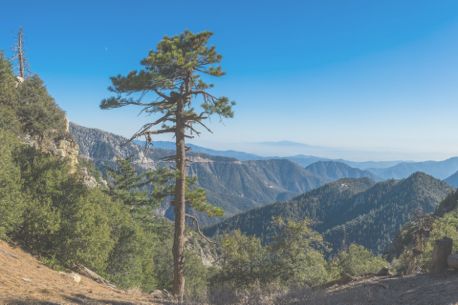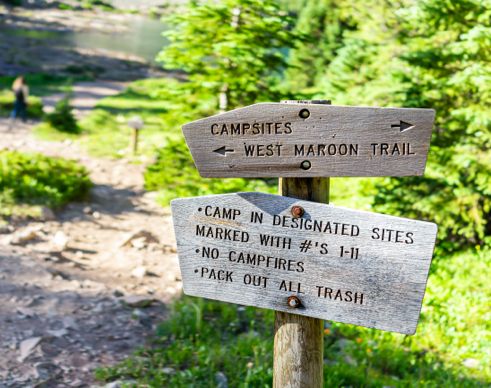Named for an American revolutionary war hero, the Francis Marion National Forest is located north of Charleston, South Carolina. Established in 1936, it is a subtropical coniferous forest that was devastated by Hurricane Hugo in 1989. Most of the trees there today have grown since then. Visitors can enjoy hiking, boating, horseback riding, mountain biking, and target shooting at the rifle range. There is also an off-road trail for ATVs and motorcycles.
Camping in Francis Marion National Forest
With an RV, you can enjoy all the comforts of home while experiencing the joys of the wilderness. You can choose to stay at one of the campsites in Francis Marion National Forest or consider some of the other RV parks in the area. RVshare will help you find the perfect camper for your family.

-
Buck Hall Campground
The Buck Hall Campground is on the site of the old Buck Hall plantation 6 miles southeast of McClellanville. It provides access to Bulls Bay, which has the best shrimp baiting on the coast. There are flush toilets, potable water, a dump station, and picnic tables at this campground, and there is a boat ramp available. Fees are $28 per night per RV site.
-
Cherry Hill Campground
The Cherry Hill Campground is a peaceful haven for nature lovers with its 29 sites. Despite being in a remote natural setting, visitors will have access to flush toilets, warm showers, potable water, and a dump station, though there are no hook-ups. The Chattooga River is nearby, as is Oconee State Park. There is a small store on-site, and fees are $15 per night.
-
Oak Plantation Campground
The Oak Plantation Campground offers 200 full-hookup sites that include water, sewer, and electricity, as well as cable and free Wi-Fi. Other amenities include restrooms with hot showers, a laundromat, a general store, and an outdoor pool. The large play area features a disc golf course and a lawn chess area. For pets, there is a fenced-in park. Rates are $59.70 per night, and discounts are available for veterans and Sam's Club members. This campground is available year-round.
Francis Marion National Forest Hiking Trails
From easy, short trails for the whole family to miles-long multi-day trips, Francis Marion National Forest has something for everyone.

-
Awendaw Passage Trail
The Awendaw Passage is a heavily trafficked out-and-back trail that features a river and is accessible year-round. It provides great low-country vistas, but the trail will get muddy after rain.
Length: 8.2 miles
Intensity: Easy
-
Palmetto Trail – Swamp Fox Passage
The Swamp Fox Passage is a part of the greater Palmetto Trail. This section is 45.9 miles long, and it is a point-to-point trail located near Bonneau, South Carolina. It features beautiful wildflowers and is best visited from September through June as it gets quite hot and humid in July and August. If you come in the summer months, make sure to bring plenty of water and bug spray. This is a great trail for bird watchers.
Length: 45.9 miles
Intensity: Moderate to Difficult
-
I'on Swamp Interpretive Trail
This moderately trafficked loop trail near Awendaw, South Carolina, is a historic, self-guided interpretive trail. It crosses over embankments that were built in the 18th century to create a patchwork of fields for rice production, which was a lucrative cash crop at the time. The trail provides a fascinating walk through the wetlands and offers views of beautiful wildflowers.
Length: 1.9 miles
Intensity: Easy
-
South Tibwin Loop Trail
This is a moderately trafficked loop trail that features a river. The trailhead is located near McClellanville, South Carolina. The scenery along this trail is quite varied, though it gets muddy in spots. It is best used from January through September.
Length: 2.3 miles
Intensity: Moderate
-
Battery Warren Interpretive Trail
Located near Jamestown, South Carolina, this lightly trafficked out-and-back trail features a river and is accessible year-round. It culminates in a high bluff atop the Santee River and traverses mixed hardwood and pine forests. In the spring, when the dogwoods are in bloom, it is particularly beautiful. The Battery Warren, a Civil War earthen fort that was meant to blockade advancing Union troops, is the highlight of the trail. Named for Revolutionary War hero Col. Samuel Warren, the embankments of this fort can be explored by visitors.
Length: 0.9 miles
Intensity: Easy
Activities in Francis Marion National Forest
The Francis Marion National Forest's longleaf pine ecosystem is recognized by the American Longleaf Restoration Initiative as having the highest biodiversity of plant life outside of the tropics. There are up to 140 plant species per 1000 square meters in this area. Visitors can see everything from carnivorous pitcher plants to orchids.
Other popular activities in the Francis Marion National Forest include hiking, shooting, biking, horseback riding, canoeing, kayaking, and off-roading. There are several trails where ATVs and off-road motorcycles are allowed.

-
Fishing

The Francis Marion National Forest offers many fishing opportunities; you can find bream, bass, crappie, catfish, and shad, as well as red drum and spot. The best places to fish include the lower portion of the Santee River and the Intercoastal Waterway. Other species sometimes found in the rivers and lakes include yellow perch and northern pike, as well as walleye, panfish, pickerel, and the tiger muskie.
-
Nature and Bird Watching

Bird watchers will also find many species in the Francis Marion National Forest; there are many types of woodpeckers and cuckoos, as well as the Eastern whip-poor-will, American woodcock, and Mississippi and swallow-tailed kites. You may also encounter many types of warblers, hawks, vireos, nuthatches, and buntings. Some subspecies, such as the Wayne's Warbler, are only seen in the coastal plains of the Carolinas. Visitors to the park might also see otters, beavers, coyotes, bobcats, raccoons, opossum, deer, and bears.
How to get to Francis Marion National Forest
Address: 2967 Steed Creek Rd, Huger, SC 29450
Fee: Entry fee $3.0
The Francis Marion National Forest is a beautiful wilderness area in the South Carolina low country. It has some of the greatest diversity of plant life in the world outside of the tropics and is a great place for bird watching and fishing. There are many beautiful waterfalls in the area, along with a variety of historical sites. For those who crave high-adrenaline adventures, the Francis Marion National Forest has ATV and off-road motorcycle trails. Your RV gives you a comfortable and convenient way to enjoy all that this park and the surrounding region has to offer.
Frequently Asked Questions About Francis Marion National Forest
Is Francis Marion National Forest open all year round?
Yes, the Francis Marion National Forest is open year-round. In fact, the forest has some of the best birding all year long of any area in South Carolina. The mild weather means the forest is a pleasant place for hiking and biking at any time of year.
Is there a fee to get into Francis Marion National Forest?
No, there is no fee to get into Francis Marion National Forest. There may be fees for recreational activities like using OHV trails or day-use areas. There may also be permits or fees required for camping or other activities.
Does Francis Marion National Forest offer free camping sites?
Yes, Francis Marion National Forest offers free camping sites. Dispersed camping is allowed throughout the forest. RVs and cars are not allowed when dispersed camping - campers must arrive on foot or by canoe. Campers must bring everything they need with them, and must leave no trace when they go.
Is there a limit to how long you can camp in Francis Marion National Forest?
Yes, there is a limit to how long you can camp in Francis Marion National Forest. Campers may be in one spot for up to 14 days within a 30-day period. After that, campers must move off of forest land.
What type of wildlife lives in Francis Marion National Forest?
Wildlife living in the Francis Marion National Forest includes black bears, otters, bobcats, and the endangered red-cockaded woodpecker. The forest is also home to more than 1600 species of plants including 32 different species of orchids and 12 species of carnivorous plants.




